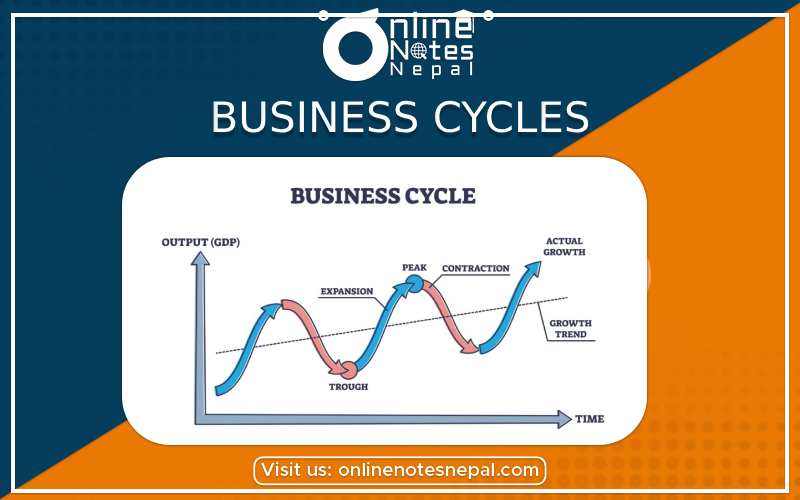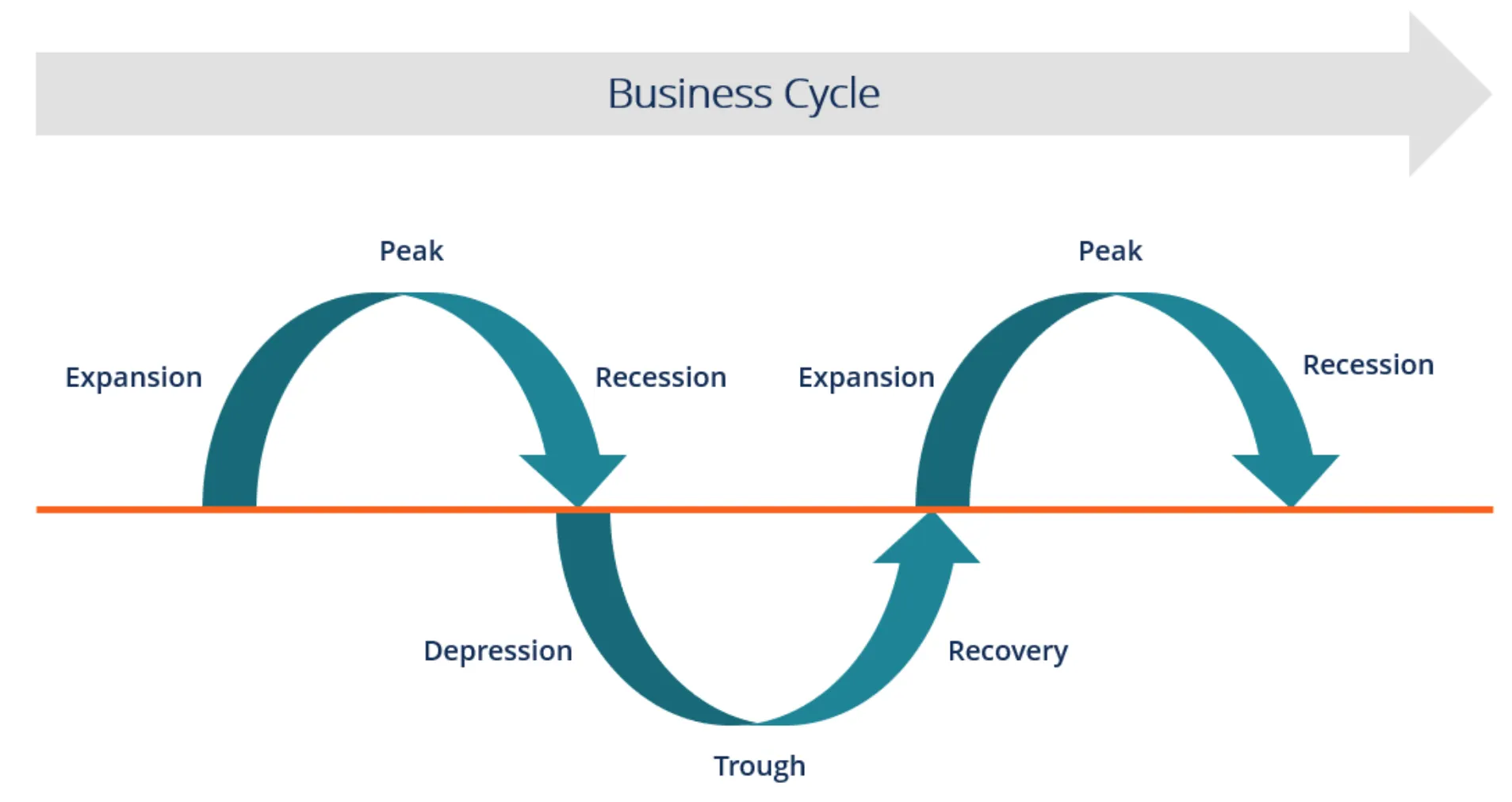Published by: Dikshya
Published date: 07 Jul 2023


Business Cycles
Business Cycles, also known as economic fluctuations, are recurring patterns of expansion and contraction in economiic activity over time. These cycles reflect the fluctuation in aggregate economic output, employement levels, and other macroeconomics variables.
The business cycle consists of four distinct phases. They are :
1. Expansion/ Boom:
This phase is marked by an increase in economic activity, such as rising production, employment, and consumer spending. Businesses experience growth, and there is an overall positive sentiment in the economy. During this phase, GDP tends to rise , and unemployment rates tend to fall. It is a period of prosperity and economic growth.
2. Peak :
The peak represents the highest point in business cycle, where economic activity reaches its maximum level. It signifies the end of the expansion phase and is characterized by high levels of production, employment, and consumer spending. However, at the peak, the economy is operating at or near its full capacity, and inflaationary pessures may start to build.
3. Contraction / Recession:
After reaching the peak, the economy enters a contraction phase. During this phase, economic activity declines, and there is a decrease in production, employment and consumer spending. GDP groeth slows down, and unemployment rates tend to rise. The recession phase is generally characterized by reduced business profits, declining investment and pessimistic sentiment in the economy.
4. Trough :
The trough represents the lowest point of the business cycle, where economic activity reaches its minimum level. It signifies the end of the contraction phase and the beginning of the recovery. During this phase, the economy starts to stabalize, and there are signs of improvement in production, employment, and consumer spending. The trough is the starting point for the next expansion phase.